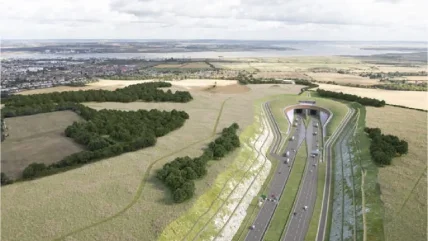
The Lower Thames Crossing project has announced an ambitious target to reduce its construction carbon emissions by 70%, to become the greenest road crossing in the UK.
The new target, as mentioned in the project’s second annual sustainability report, reflects the project’s commitment to the local community and environment.
Lower Thames Crossing is a proposed road and tunnel project, designed to address the congestion and boost economic growth by enhancing road capacity east of London.
It aims to establish a reliable route linking the north and midlands with the south-east ports.
Lower Thames Crossing is a carbon pathfinder project that aims to pioneer and scale up low-carbon construction approaches,
Together with its Delivery Partners and supply chain, the project reduced its construction carbon footprint by nearly half, becoming the UK’s first major project with a legally binding carbon limit.
The Lower Thames Crossing project aims to further reduce the carbon footprint with a new target of less than 840,000 tonnes, a 70% reduction from initial predictions.
The project aims to achieve the target by adopting a forensic approach to refining road design and using low-carbon steel and concrete.
In addition, the project plans to eliminate diesel from construction sites by 2027, by using electric vehicles and hydrogen to power its heavy construction machinery.
Also, the project is in the final stages of running a low-carbon footbridge contest to find sustainable designs for the A127 bridge.
Lower Thames Crossing supply chain development director Katharina Ferguson said: “We will create a new blueprint for how we build low-carbon infrastructure and leave a legacy of jobs, skills and green spaces for the local community.
“With millions invested in local projects and a new community woodland at Hole Farm on track to open next year, we’re already making a difference, well before work on the new road gets underway.”
Lower Thames Crossing’s plans include building a tunnel instead of a bridge to protect wetlands, creating seven green bridges for safe crossings, and planting at least 1m trees.
The project will also include planned new community woodlands and parks, alongside 40 miles (64km) of pathways for active travel.
Its sustainability report highlights the readiness to start construction pending government approval and local community benefits from a £250,000 Community Fund.
The project’s Skills Hub pilot programme has engaged prisoners and locals in skill development, and work has begun on community facilities at Hole Farm.
The construction of Lower Thames Crossing is expected to take six years, with an extended deadline for a decision on the planning application to 23 May 2025.







